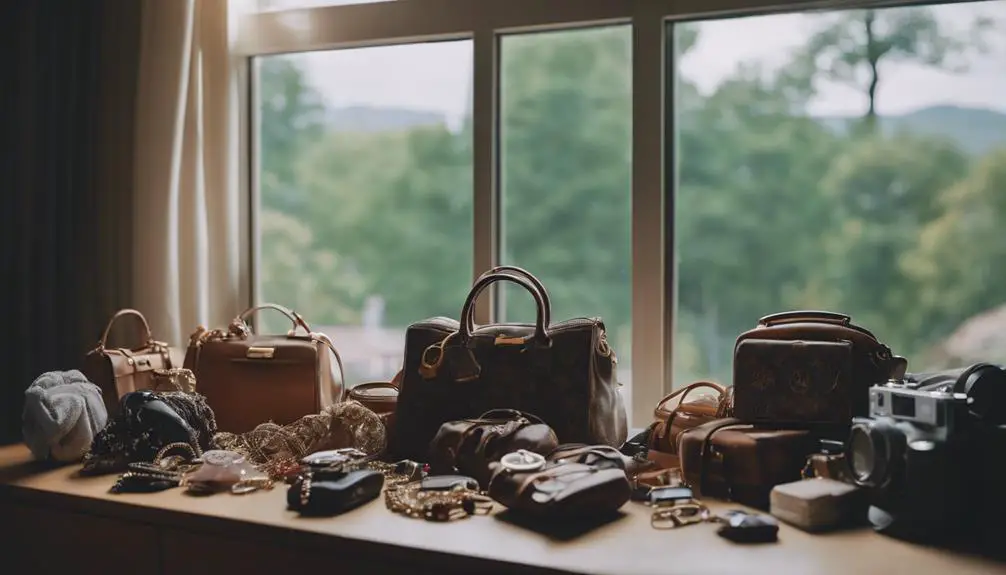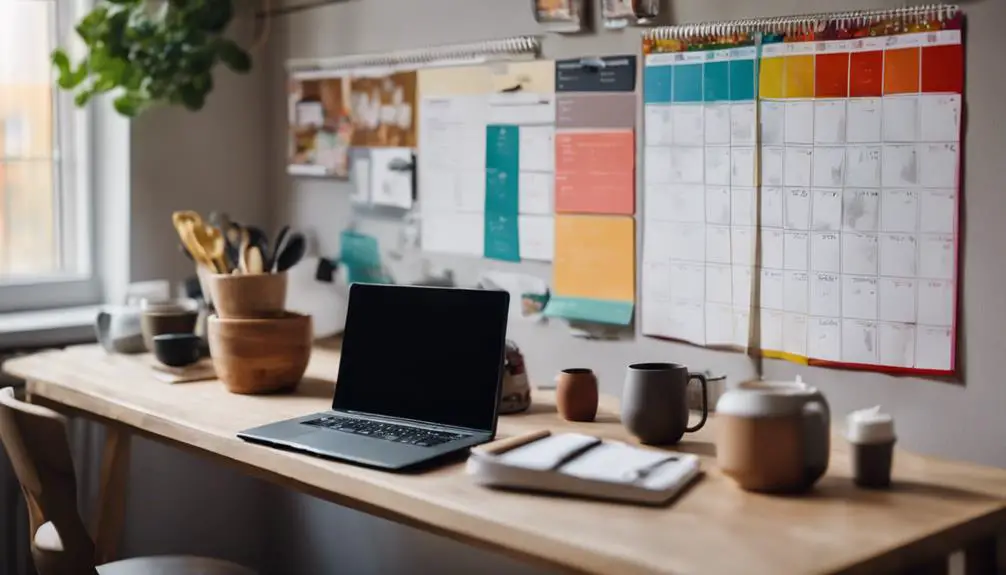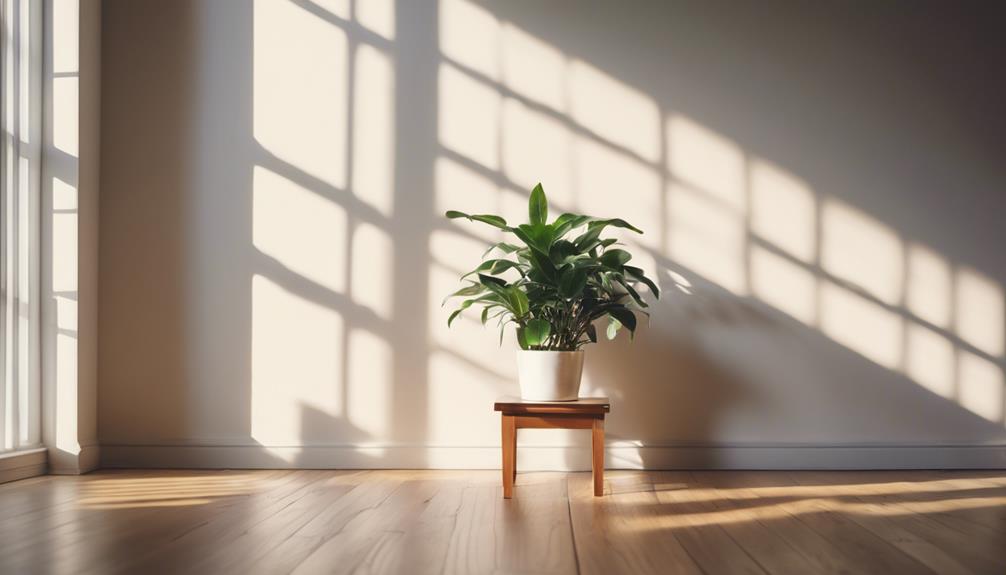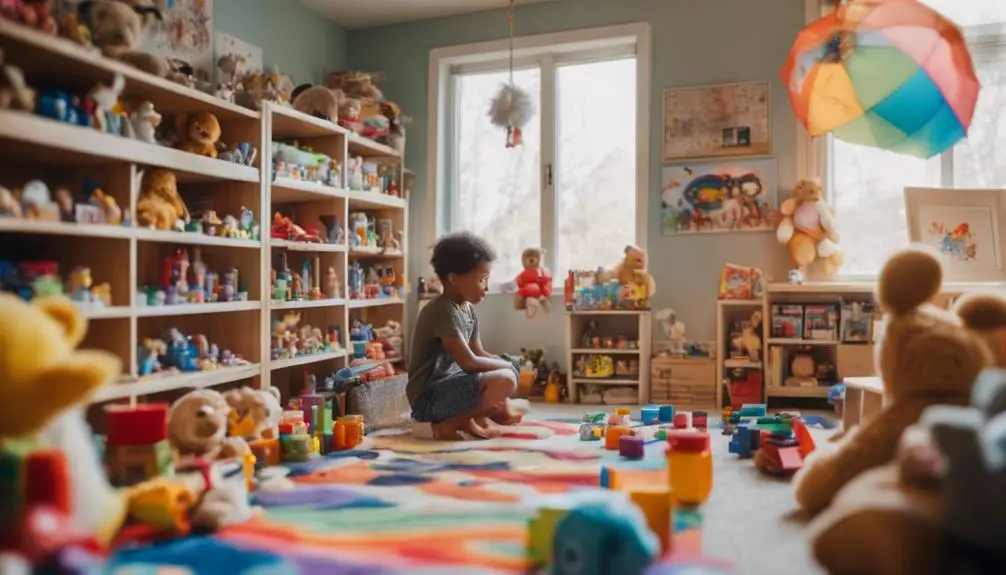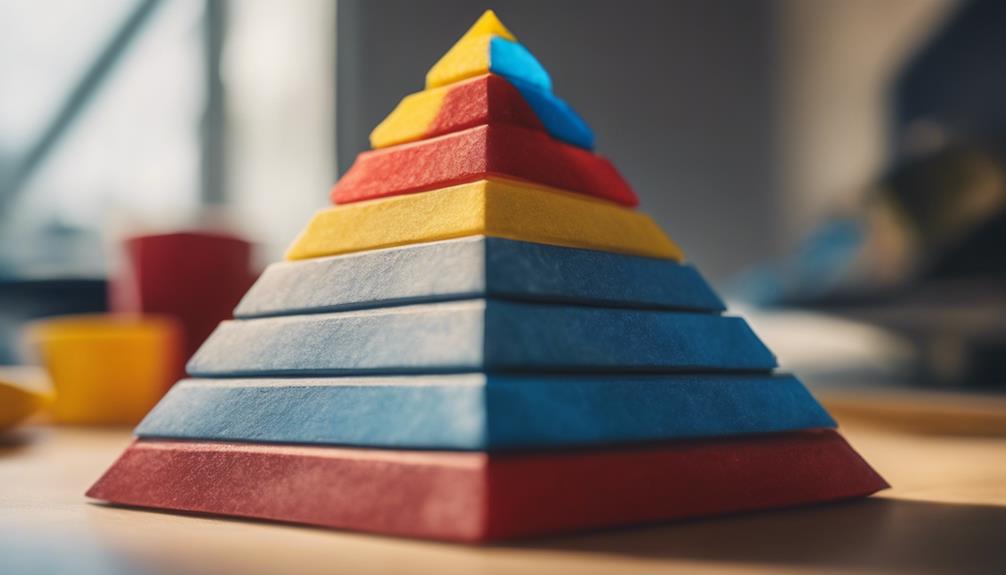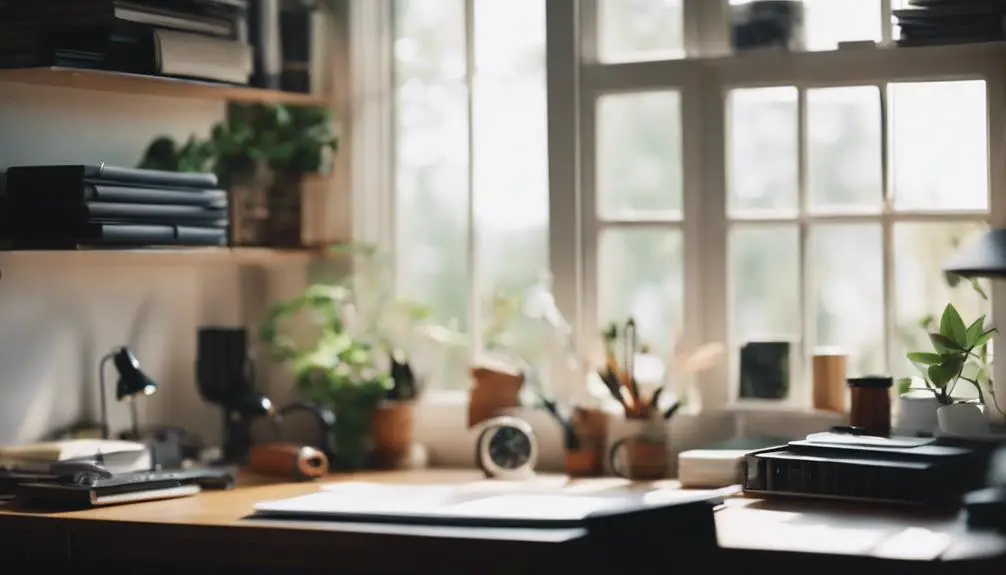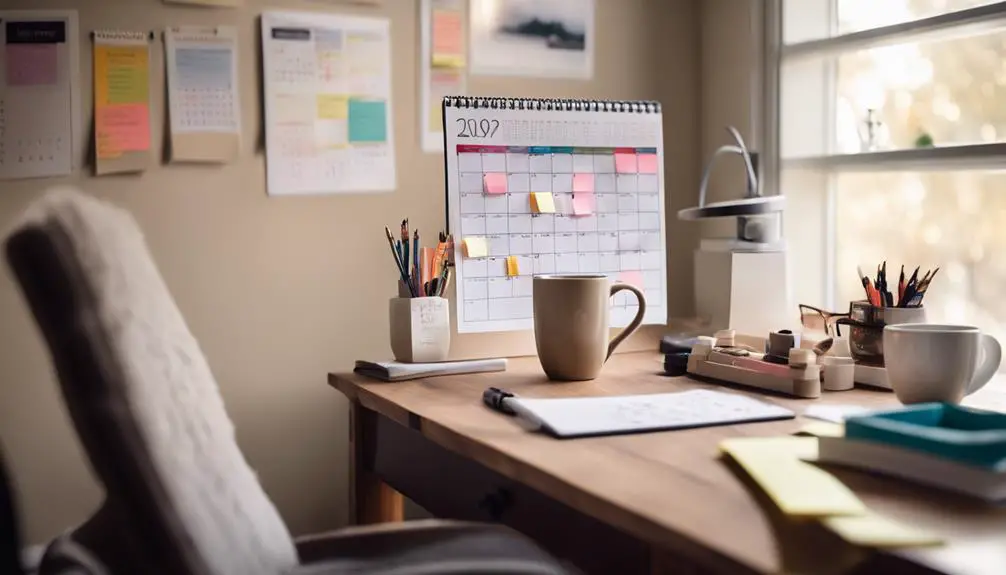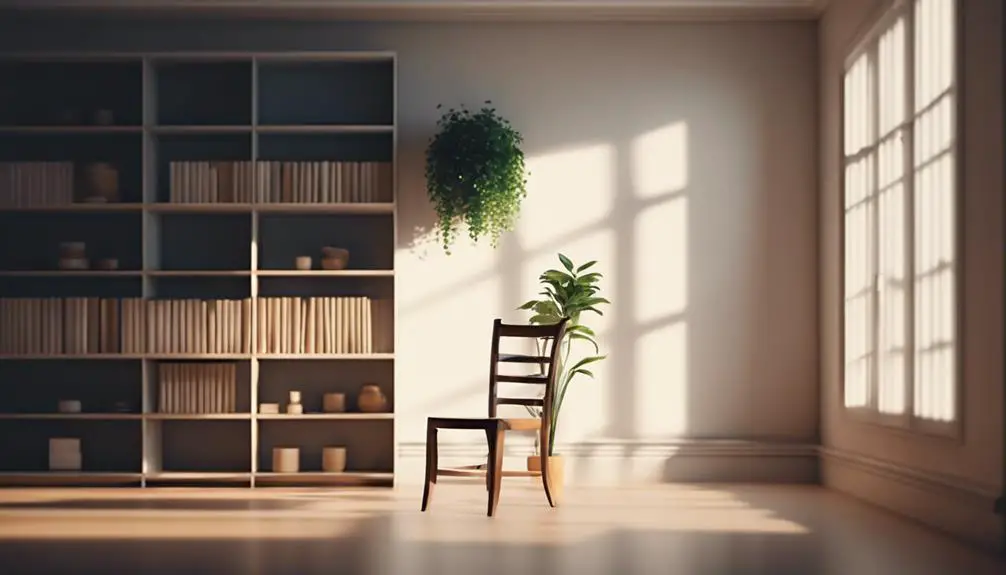Have you ever considered why certain belongings evoke strong emotional responses? These possessions often embody memories and meanings that contribute to your sense of self, yet they can also become burdensome. It’s common to value items that reflect your personal journey, but distinguishing between comforting mementos and overwhelming clutter is crucial.
Examining this relationship can reveal insights about your own identity and values. What changes might occur if you reassessed these attachments?
For instance, a childhood toy might bring back fond memories, serving as a reminder of simpler times. However, if it takes up valuable space in your home and prevents you from enjoying other aspects of your life, it may be time to reconsider its place in your life. Evaluating these connections can lead to a clearer understanding of what truly matters to you, making room for new experiences and memories.
Engaging with this process can be enlightening. Consider creating a system to categorize your belongings, determining which items you genuinely need or cherish and which ones could be let go.
This method can not only declutter your space but also clarify your emotional landscape. In this way, you can foster a more intentional relationship with your possessions, aligning them with your current self rather than your past.
Understanding Emotional Attachment
Emotional attachment to material possessions often arises from personal experiences and the memories associated with those items. Certain belongings can trigger feelings of comfort or nostalgia, linking you to meaningful moments in your life. Recognizing this attachment is crucial for developing emotional resilience and fostering personal growth.
Attachment theory indicates that these connections can have both beneficial and detrimental effects. While these attachments may provide a sense of stability, they can also prevent you from embracing a more conscious and fulfilling life. Engaging in self-reflection is vital to assess the significance of these items in your life. Consider whether they bring you happiness or if they simply symbolize a past you find challenging to release.
Practicing mindful consumption and focusing on emotional healing can support you in this journey. Evaluate what genuinely enhances your life and cultivates a sense of inner peace.
Releasing belongings that no longer serve your purpose can liberate your spirit and create opportunities for new experiences. The process involves achieving balance and recognizing that true freedom often comes from knowing when to let go of material attachments.
Embracing this journey will lead to a more profound connection with yourself and a clearer understanding of what truly matters.
The Role of Sentimental Value
Certain items can evoke a wave of memories and emotions. These objects often hold stories from your past, linking you to important moments and individuals in your life. Recognizing this sentimental value sheds light on why you cling to these items with such fervor.
For instance, a childhood toy may remind you of carefree days spent with friends or family, while an old letter could bring back feelings of love and connection with someone special. Each item’s unique narrative contributes to its significance, making it more than just a simple object.
Understanding the importance of these treasures can help you appreciate the role they play in your life. They serve as tangible reminders of experiences that shaped you, providing comfort and familiarity in a constantly changing world.
Instead of viewing them as mere clutter, see them as cherished links to your personal history.
Emotional Connection to Items
Items that carry memories can forge a profound connection that goes beyond their mere physical form. Nostalgic belongings, such as a cherished childhood toy or a handwritten letter, act as emotional artifacts linking you to significant moments in your life. According to attachment theory, these valued possessions reflect your identity and serve as markers that anchor you in your personal story.
Consider the belongings you hold dear; they aren’t simply things. They serve as connection objects that elicit strong emotions and memories. A comfort item, like an old blanket, may provide solace during difficult times, reminding you of warmth and safety.
These personal treasures act as memory triggers, bringing back recollections of joy, love, and essential life lessons. Your emotional ties to these items empower you and foster a sense of freedom as you face life’s obstacles. Embracing these attachments allows you to honor your past while moving forward into the future.
Celebrating the happiness these possessions bring is vital, as they help shape your identity and remind you of the precious experiences that have preceded you. For instance, a faded photograph from a family vacation can evoke laughter and nostalgia, reinforcing your connection to those you love.
Maintaining these connections with your belongings not only enriches your life but also serves as a reminder of the journey you’ve taken and the growth you’ve experienced along the way.
Memories and Personal History
Sentimental value transforms ordinary items into powerful symbols of your personal history. Consider those nostalgic objects tucked away in your home; they tell stories that shape your identity. Each personal heirloom carries a sense of belonging and roots, acting as memory triggers that evoke emotions and long-forgotten moments.
Whether it’s a beloved teddy bear with frayed edges or a vintage watch that has seen better days, these emotional keepsakes remind you of cherished experiences and loved ones.
Legacy items serve as storytelling artifacts, enabling you to share your history with others and build connections that transcend time. Family treasures, like your grandmother’s quilt or your grandfather’s fishing rod, hold historical significance, linking you to your ancestry.
You may recall the laughter shared over a dinner table adorned with these keepsakes or find solace in quiet moments of reflection.
Embracing these possessions anchors you in nostalgia and empowers you to celebrate your life’s journey. Each piece you treasure reflects your experiences, inspiring you to continue crafting your unique narrative with every new chapter.
These items not only capture memories but also serve as reminders of the love and connections that have shaped your life.
Material Possessions and Identity
Material possessions significantly influence our self-perception and how others view us. These belongings aren’t merely items; they’re fundamental components of our identity. Attachment theories reveal that the emotional connections we form with our possessions can profoundly shape our self-image.
In a society largely defined by material culture, the possessions we own often convey a clear message about who we are. Our consumer choices reflect our values, preferences, and even our aspirations. The significance we assign to our belongings transcends their monetary value; it lies in the emotional connections and memories they evoke.
The items we choose to fill our spaces can create a sense of belonging and emotional strength. For instance, an old concert t-shirt or a handmade ceramic bowl can serve as reminders of cherished experiences and connections.
These possessions not only narrate our personal stories but also express our beliefs and priorities to the outside world. Understanding the link between our material possessions and our identity can empower us to curate a life that resonates with our true selves, fostering a sense of freedom and authenticity.
Minimalism: A Different Perspective
Minimalism invites you to embrace the concept that having less can actually lead to more fulfillment. Shedding unnecessary belongings allows you to liberate yourself from the constant pull of consumer culture. Consider the impact of reducing distractions in your life—this change can foster clarity and enhance your focus on what truly matters.
The journey into minimalism involves evaluating your possessions and understanding their true value in your life. For instance, instead of holding onto items simply because they occupy space, ask yourself if they bring genuine joy or utility. This practice not only declutters your environment but also clears your mind.
Adopting a minimalist lifestyle can transform your mental landscape. When you reduce the noise of excess, you create room for meaningful experiences and connections. This approach emphasizes quality over quantity, encouraging you to invest in items that enrich your life rather than clutter it.
Consider starting with a small area of your home, such as a closet or a desk. Remove everything, then thoughtfully decide what to keep based on its significance. This hands-on method can reveal how much you’ve accumulated without purpose.
Embracing Less Is More
Living in a world brimming with choices and possessions can often feel overwhelming. Adopting a “less is more” philosophy can significantly change your life for the better. Mindful consumption allows you to make intentional choices that reflect your values and priorities. This deliberate way of living encourages you to value quality over quantity, which can enhance your emotional resilience during difficult times.
As you begin to declutter your space, you create an opportunity to reassess what truly holds significance in your life. This process fosters a mindset of gratitude, leading you to cherish experiences rather than material possessions. You start to appreciate experiential wealth, which provides a deeper sense of fulfillment. Instead of accumulating items that may eventually lose their appeal, you focus on creating lasting memories.
Sustainable living practices become a seamless part of your routine, enabling you to positively impact the environment while simplifying your lifestyle. This journey extends beyond just reducing your belongings; it enriches your existence.
You discover that happiness often arises from having less: less clutter, reduced stress, and increased clarity. Embracing a “less is more” approach empowers you to regain control, allowing freedom to thrive in your life. Ultimately, reassessing your values leads to a more meaningful and intentional existence.
Freedom From Consumerism
Consumer culture inundates individuals with messages linking happiness to the ownership of goods, making it easy to fall into a cycle of endless craving.
However, there’s a compelling alternative: embracing freedom from consumerism. Transitioning to sustainable living practices allows for a shift in focus from material possessions to mindful consumption. Intentional purchasing empowers you to make choices that resonate with your personal values, fostering a lifestyle that emphasizes experiences over items.
Resisting the impulse to chase every fleeting trend can lead to significant financial freedom. Rather than indulging in unnecessary purchases, consider investing in ethical consumerism. Support brands that prioritize sustainability and community engagement, which not only brings you joy through giving but also creates a positive impact on the world around you.
As you adopt these changes in your lifestyle, you’ll discover the true worth of experiences—traveling, learning, and forming connections with others. This focus on relationships leads to deeper bonds and lasting memories that offer fulfillment far beyond what material possessions can provide.
This journey not only liberates you from the confines of consumerism but also encourages others to join your cause. Together, you can build a community that values conscious living, finding happiness in simplicity and connections rather than accumulation.
Psychological Factors Behind Attachment
Attachment to material possessions often arises from complex psychological factors that influence our identities and emotions. Your attachment styles, shaped by experiences in childhood, determine how you relate to objects. These formative experiences can lead to cognitive biases, causing you to associate value with ownership.
Emotional regulation is significant as well; finding solace in material items can serve as a buffer against stress. Cultural background also plays a crucial role in consumer behavior, often prompting comparisons with others. This social comparison can amplify your attachment to specific belongings, as you seek affirmation through what you possess.
As you navigate these influences, you may notice that your sense of self is intricately linked to your possessions. Recognizing the importance of value assessment is vital. Identifying what truly matters in your life can enhance your psychological resilience, enabling you to move beyond the confines of materialism.
Acknowledging the psychological roots of your attachment allows you to reclaim autonomy and focus on a life rich in experiences rather than things. Embrace the process of personal discovery and let go of what doesn’t align with your authentic self.
Cultural Influences on Materialism
Cultural norms and values significantly influence how individuals perceive and value material possessions. What constitutes having “enough” is often shaped by societal narratives that link specific items to social status. The impact of advertising can’t be overstated, as it fosters a consumer culture where lifestyle branding becomes integral to one’s identity. This environment creates a sense of urgency to conform, often fueled by peer pressure, prompting individuals to acquire goods that signify success or a sense of belonging.
Economic factors also play a crucial role; in today’s interconnected world, materialism can mirror personal ambitions while reflecting broader economic trends. Globalization has made luxury items more obtainable for many, yet it risks overshadowing cultural heritage, complicating the distinction between necessity and mere desire.
Family traditions contribute to personal perspectives on value, weaving individual history into the fabric of material attachment. The relationship between individuals and material goods is shaped by a complex interplay of personal choices and cultural influences.
Understanding these layers can provide insight into navigating one’s desires, leading to a sense of empowerment in making choices. This awareness allows individuals to break free from the overwhelming currents of consumer culture and make more intentional decisions about their possessions.
The Impact of Consumerism
Consumerism influences your life in ways that may not be immediately apparent. It can affect your mental health, leading you to believe that your happiness is directly linked to your possessions. This mindset can create a cycle of wanting more, which ultimately leaves you feeling unfulfilled.
Furthermore, consumerism drives overproduction and contributes to environmental degradation, as the demand for more products results in increased waste and resource depletion. Understanding these dynamics is crucial because they shape not only your personal experiences but also the broader impact on society and the planet.
For instance, the constant push to buy the latest smartphone or fashion trends can lead to financial stress and environmental issues, such as pollution and climate change.
To counteract these effects, consider adopting a more mindful approach to consumption. This might include evaluating whether a purchase truly adds value to your life or if it’s simply a temporary desire.
Focusing on experiences rather than material goods can also foster deeper happiness and satisfaction. For example, planning a weekend getaway with friends can create lasting memories without the need for excessive spending.
Psychological Effects of Consumerism
While many individuals pursue the latest gadgets and fashion trends, the psychological consequences of consumerism often remain overlooked. You might find yourself ensnared in a consumer culture where marketing techniques exploit your desires. This fixation on material goods can trigger an identity crisis, as you gauge your value through status symbols and comparisons with others. Your spending behaviors may reveal a deeper need for approval, influencing how you perceive your worth and emotional strength.
As you navigate this environment, attachment theory suggests that emotional reliance on possessions can skew your self-image. Behavioral economics points out the mental discomfort that arises when your lifestyle choices conflict with your authentic desires. Although a new purchase may bring a fleeting sense of joy, this happiness often dissipates quickly, leaving you longing for more.
Recognizing these psychological effects is crucial for reclaiming your autonomy from the pressures of consumerism. Understanding the economic forces at play can help shift your focus from accumulating material possessions to engaging in experiences that promote true identity development. Breaking free from the cycle of consumption allows you to prioritize emotional health over material wealth.
For instance, consider choosing experiences like travel or creative workshops over the latest smartphone. Such choices can provide lasting memories and personal growth, enriching your life far beyond the temporary satisfaction of a new gadget. Embracing this mindset fosters a deeper sense of fulfillment and well-being.
Environmental Consequences of Excess
The constant chase for material possessions not only impacts your mental well-being but also significantly harms the environment. Your buying habits shape the world around you, with every purchase adding to your ecological footprint. As you seek the latest trends, you may unintentionally support practices that lead to resource depletion and increased waste.
Adopting sustainable practices isn’t just a passing trend; it’s an essential shift in lifestyle. Embracing ethical consumption means making choices that support conservation efforts and renewable resources. Each decision matters, whether it involves selecting eco-friendly products or cutting down on plastic usage.
Effective waste management plays a crucial role as well. Reducing waste and recycling when possible can help minimize your environmental impact. You have the ability to influence how industries function, advocating for practices that prioritize sustainability over excess.
Ultimately, this journey is about reclaiming your autonomy—freeing yourself from the cycle of mindless consumption and its burden on the planet. Being mindful of how your choices affect the Earth contributes to a healthier future for you and for generations to come.
For instance, choosing reusable bags and containers instead of single-use plastic or supporting brands that prioritize eco-friendly practices can make a significant difference.
Balancing Sentiment and Minimalism
Navigating the balance between sentiment and minimalism requires recognizing that meaningful connections to objects can exist without leading to clutter. To achieve this balance, embrace a practice of mindful ownership, where you thoughtfully decide what to keep based on its emotional significance. This approach enhances your awareness of attachments, allowing you to value the stories behind your belongings while avoiding feelings of overwhelm.
Regularly reassess the value of your items. Reflect on whether each piece brings joy or serves a practical function in your life. This method encourages emotional simplicity, enabling you to release unnecessary possessions while retaining the memories that truly count. Setting clear intentions is vital; determine what you seek from your space and how your belongings can enhance your life.
For instance, consider a cherished photograph. Instead of storing it away in a box, display it prominently in your home. This not only keeps the memory alive but also brings a personal touch to your space.
Alternatively, if you have a collection of books, select a few that hold significant meaning and create a dedicated shelf for them, showcasing your love for literature while maintaining a tidy environment.
Ultimately, the goal is to cultivate a living space that reflects your values and memories without succumbing to chaos. By being intentional about what you keep, you create a harmonious atmosphere that celebrates both sentiment and simplicity.
The Psychology of Hoarding
When considering hoarding, emotional triggers and memories frequently come to the forefront. The attachment to items linked to your identity or sense of self-worth can create significant barriers to letting go. Grasping these psychological factors is crucial in managing your connection with material possessions.
For example, a person might hold onto a collection of old letters not just for their physical presence, but because they evoke memories of past relationships and experiences that contribute to their sense of self. Understanding this connection can help individuals recognize why they struggle to part with certain items and encourage them to consider alternatives, such as digitizing cherished memories.
Addressing the emotional weight tied to possessions can lead to healthier habits and clearer spaces. It’s essential to acknowledge that these items aren’t inherently valuable; rather, the significance often lies within the memories they represent.
Recognizing this distinction can facilitate a more mindful approach to decluttering and creating a living environment that reflects one’s current identity, rather than one that’s anchored in the past.
Emotional Triggers and Memories
Holding onto objects often arises from deep emotional triggers that link memories to tangible items. Nostalgic triggers can bring personal stories to life, creating attachments that are difficult to release. Each treasured item represents a connection to the past, safeguarding memories that you might fear losing. This emotional bond is informed by attachment theory, which suggests that your ability to cope emotionally can be influenced by the burden of these possessions.
As you sift through your belongings, consider how emotional clutter can obscure your ability to appreciate the present moment. The urge to retain items may stem from a fear of loss, as letting go can feel like losing a part of yourself. However, recognizing the significance of these objects allows you to differentiate between what genuinely holds meaning and what simply takes up space.
Understanding how memory preservation impacts your life can empower you to discard items that no longer provide value. When you set aside unnecessary possessions, you make way for new experiences and emotions, fostering a sense of freedom beyond physical items.
Embrace this process and allow your past connections to shape your future without burdening you. For instance, you might find it helpful to take a photo of an item before letting it go, ensuring that the memory remains intact without the physical object.
Fear of Loss
The fear of losing things often significantly impacts the psychology of hoarding. Individuals tend to hold onto possessions as a way to protect their memories and maintain a sense of identity. This fear frequently arises from a profound worry about abandonment, leading to a strong aversion to loss. Many people find themselves keeping items, convincing themselves that these belongings offer emotional safety and material stability during difficult periods.
Attachment theory highlights how your relationships influence your views on loss. When you experience grief, struggling to process these emotions can lead to a crisis of identity, making you feel exposed and vulnerable. In these challenging times, hoarding can emerge as a misguided strategy for managing emotions, as you try to fill the emptiness left by lost connections.
Building emotional resilience is crucial in this context. Developing this resilience enables you to handle grief without resorting to accumulating clutter.
Accepting change and understanding that loss is a normal aspect of life can aid in breaking the cycle of hoarding. Ultimately, discovering healthier coping mechanisms empowers you to regain your freedom and lessen the weight of your attachments.
Identity and Self-worth
Many individuals dealing with hoarding often link their sense of self and value to their belongings. This connection can warp how they see themselves, making it challenging to define their identity apart from the items they collect. Rather than perceiving possessions as simple objects, they may find themselves measuring their worth against others, thinking it’s determined by what they possess.
To escape this pattern, it’s crucial to reassess what you truly value. As you reflect on how your identity has changed over time, you’ll discover that sources of fulfillment exist beyond material goods. Cultivating emotional resilience equips you to handle life’s transitions more smoothly, promoting a journey of self-acceptance that honors who you’re instead of what you possess.
Understanding attachment theory highlights the importance of forming connections through experiences and relationships rather than through material items. This intrinsic motivation can lead you to pursue meaningful activities that fulfill your need for belonging.
As you examine your sense of worth, you may notice that the quest for external approval becomes less significant, making way for a deeper comprehension of your inherent value. Personal growth unfolds as you reshape your identity, recognizing that true richness originates from within.
For instance, consider engaging in community activities or volunteer work. These experiences not only foster connections but also enhance your perception of self-worth through active participation and contribution.
As you prioritize relationships and experiences over possessions, you may find a more profound sense of fulfillment and identity.
Letting Go of Material Ties
Letting go of material ties can feel like untangling a web of attachments that burden you. This process is more than just clearing out physical space; it’s an invitation for emotional freedom in your life. With each item you choose to release, you have the opportunity to reassess what truly holds value for you. Practicing mindful consumption allows you to make intentional decisions that align with your vision of a meaningful existence.
| Before Letting Go | After Letting Go |
|---|---|
| Burdened by excessive possessions | Adopting a more streamlined lifestyle |
| Experiencing stress from clutter | Finding relief through reduced anxiety |
| Clinging to outdated items | Discovering joy in carefully selected belongings |
As you embark on this journey of releasing attachments, think of space clearing as a way to prioritize what matters most in your life. Consider your legacy and how you wish to be remembered. Cultivating a gratitude practice can enhance your appreciation for the items you decide to keep. This personal transformation unfolds over time; embrace the journey. You are not merely getting rid of things; you are fostering clarity and freedom in your life.
For those looking to simplify their space, consider starting with a specific area, like a closet or a drawer. Take everything out and assess each item. Ask yourself if it serves a purpose or brings you joy. If it doesn’t, let it go. This technique not only helps you declutter but also reinforces the idea of intentional living. You might also explore tools like storage bins or donation boxes to make the process smoother and more organized.
Benefits of Reducing Attachments
Reducing attachments can bring a wealth of benefits that enhance your overall well-being. Embracing a mindset of simplicity allows you to liberate yourself from the constraints of materialism, which significantly boosts your emotional resilience. Practicing mindful consumption helps you evaluate what truly enriches your life, enabling you to focus on experiences rather than accumulating possessions.
The advantages of decluttering extend beyond just creating physical space; they also lead to improved mental clarity. Letting go of unnecessary items fosters an environment that encourages intentional living, where your choices genuinely reflect your desires instead of societal pressures. This transformation aligns with attachment theory, which emphasizes that your self-worth isn’t determined by your possessions.
Furthermore, reducing attachments encourages sustainable living. Thoughtful consumption contributes to a healthier planet, ensuring that your choices resonate with a larger purpose.
As you simplify your environment, you cultivate a sense of freedom that empowers you to concentrate on what truly matters in life. This journey isn’t merely about having less; it’s about gaining more—more joy, more peace, and a deeper connection to yourself and the world around you. Embracing these benefits can lead to a richer, more fulfilling life.
Building Meaningful Experiences
In a world filled with numerous choices, shifting the focus toward building meaningful experiences can significantly enhance your life. Emphasizing experiences over material possessions invites a journey of emotional development and rich relationships that nourish your spirit. This change demands intentional decisions and a dedication to living with purpose.
Consider these aspects to enrich your life:
- Mindfulness practice: Fully engage in each moment, which allows you to recognize and appreciate the beauty surrounding you.
- Intentional experiences: Pursue activities that align with your values and passions, fostering a sense of joy and fulfillment.
- Meaningful connections: Dedicate time to relationships that uplift and inspire you, cultivating a supportive and understanding network.
As you embark on this transformative path, prioritizing experiences will lead to deeper connections and lasting happiness.
You’ll navigate life with intention, embracing every opportunity for growth. Ultimately, your goal is to craft a meaningful existence, where every moment offers a chance to create, connect, and celebrate.
Embrace this journey, select experiences, and let your heart guide you toward a life filled with significance and purpose.
The Connection Between Memories and Objects
Objects often serve as more than just possessions; they carry significant meaning tied to our memories. Each item we own can act as a physical reminder of experiences that have shaped who we are, often stirring feelings of nostalgia. Cherished belongings, whether they’re old photographs or travel souvenirs, function as memory artifacts, preserving moments that might otherwise slip from our minds.
In the field of attachment psychology, the emotional responses connected to these objects highlight their importance as artifacts. For instance, holding onto a trinket from a loved one can evoke memories of shared laughter or a poignant farewell. This ability to preserve memories allows us to embark on a sentimental journey through our past experiences and emotions.
When considering the meaning of these physical reminders, it’s essential to recognize how they contribute to our sense of self. Our relationship with these items goes beyond mere ownership; it’s about the memories they hold. Acknowledging this connection can foster a deeper understanding of our identities and histories, helping us navigate our present circumstances with more awareness and clarity.
For example, a faded concert ticket mightn’t just represent a fun night out but also symbolize a pivotal moment in your life, such as the beginning of a friendship. Taking time to reflect on these connections can enrich our lives and provide insight into the paths we’ve taken.
Strategies for Decluttering
Reflecting on the memories associated with your belongings reveals that some items may no longer hold significance in your life. Embracing the process of decluttering can lead to an emotional cleanse that revitalizes your spirit.
Begin by identifying what genuinely matters to you. Here are some strategies to consider:
- Digital decluttering: Take time to remove outdated files, unsubscribe from unnecessary emails, and organize your digital files. A clean digital environment can enhance your mental clarity and reduce stress.
- Set limits: Decide how many sentimental items you wish to retain. This approach enables you to concentrate on the memories that truly resonate and brings clarity to your choices.
- One in, one out: For every new item you introduce into your living space, commit to removing an older item. This practice prevents clutter from accumulating and encourages intentionality in your purchases.
Finding Joy in Simplicity
Simplicity offers a refreshing clarity that can significantly enhance your everyday life. Embracing a simpler lifestyle allows you to experience joy in ways that illuminate the beauty found in the present moment. Mindful consumption acts as a vital tool, encouraging you to make thoughtful decisions regarding what you allow into your life.
Here’s a concise overview of how you can nurture joy through simplicity:
| Aspect | Action | Benefits |
|---|---|---|
| Gratitude Practice | Reflect daily | Increases overall happiness |
| Nature Connection | Spend time outdoors | Enhances well-being |
| Creative Expression | Try a new hobby | Builds self-confidence |
| Community Engagement | Volunteer locally | Strengthens social ties |
| Sustainable Habits | Reduce waste | Safeguards the environment |
As you foster a sense of appreciation for the present, you begin to see that life’s richness is woven into small, everyday moments. Engaging with your community and nurturing relationships helps cultivate a sense of belonging. By emphasizing these elements, you not only discover joy in simplicity, but also construct a life that resonates with freedom and fulfillment.
Incorporating practices such as daily gratitude journaling can enhance your mood and perspective. Spending time in nature, whether it’s a walk in the park or a hike in the mountains, can significantly improve your mental health. Trying out new hobbies, like painting or gardening, can unleash your creativity and build confidence. Volunteering in your local community not only helps others but also deepens your connections with those around you. Finally, adopting sustainable habits, such as using reusable bags and reducing single-use plastics, contributes positively to the environment and promotes a healthier planet for future generations.
Redefining Personal Worth
Finding joy in simplicity prompts a reassessment of what truly matters in life, particularly in how we perceive our personal worth. You start to understand that your value extends beyond material possessions and external validation. Engaging in practices of self-reflection helps you explore your motivations and desires on a deeper level.
Consider implementing the following techniques to support your journey:
- Attachment awareness exercises enable you to identify the emotional connections you have with your belongings, helping you shift your focus toward more meaningful aspects of life.
- Value reassessment techniques allow you to redefine what success means to you, aligning those definitions with your true self rather than societal expectations.
- Gratitude cultivation methods encourage you to acknowledge and appreciate what you already possess, enhancing your personal growth journey.
As you investigate intrinsic motivation, building emotional resilience becomes more attainable. Embracing strategies for self-acceptance empowers you to flourish without dependence on material wealth.
This transformation involves more than just reducing your possessions; it’s about nurturing a sense of worth that remains stable, irrespective of external conditions. Ultimately, redefining your personal worth offers a liberating experience, unveiling a life rich with purpose, connection, and authentic happiness.
Moving Towards a Minimalist Lifestyle
Embracing a minimalist lifestyle can significantly enhance your daily experiences and overall well-being. This approach fosters emotional resilience and grants a deeper sense of financial independence. You will make deliberate choices about your needs, focusing on mindful consumption that emphasizes quality rather than quantity.
To kickstart your decluttering journey, consider these effective strategies:
| Decluttering Strategies | Benefits |
|---|---|
| Begin with small tasks | Helps build momentum |
| Establish clear objectives | Encourages intentional living |
| Donate or sell items you no longer use | Contributes to sustainable practices |
| Limit your purchases | Enhances financial freedom |
| Reflect on your attachments to items | Facilitates personal growth |
As you implement these lifestyle changes towards minimalism, you will create room for meaningful experiences instead of accumulating material goods. Each conscious decision you make enhances your life quality, allowing you to concentrate on what truly matters. You will come to understand that freedom is found not in possessions but in clarity of purpose and the joy of living simply. Start your path today—your fulfilling minimalist lifestyle is within reach!
Conclusion
As you find yourself in a cluttered room, it resembles being surrounded by a gallery of your past, where each object narrates a tale yet adds to your burden. Letting go of possessions doesn’t equate to erasing those memories; instead, it resembles releasing a balloon into the sky. The cherished moments remain alive in your heart. Embracing minimalism can provide clarity, allowing you space for fresh experiences while honoring the memories that hold true significance. Choosing joy in simplicity can lead to a remarkable transformation in your life.
For instance, consider how a tidy living space can enhance your mood and productivity. A clean desk promotes focus, while a minimalist wardrobe simplifies your daily choices. By reducing clutter, you create an environment that fosters creativity and peace. This approach not only benefits your physical surroundings but also contributes to your mental well-being. Adopting a minimalist mindset can open doors to new opportunities, making room for what truly enriches your life.
